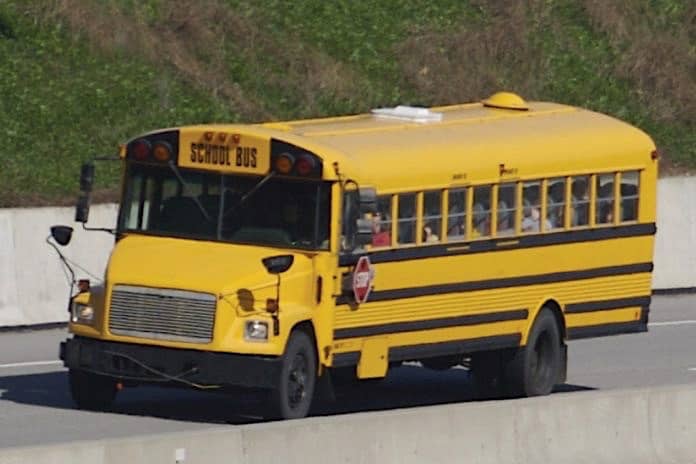Trends to clean the air are shifting and becoming more stringent, from the EPA’s crackdown on coal-fired power plants to an ambitious eight-state alliance to put 3 million zero-emission passenger vehicles on the nation’s road by 2025.
That means change for school bus emissions grants, too. For now, there’s still cash on the table for school districts, but there’s neither the quantity nor ease of winning funds as in the past.
“We thought school bus funding was like shooting fish in a barrel. The economy went bad, and there were contractions that hit federal transportation money. Generic funding is still there, but specific school bus programs just aren’t there anymore,” said Richard Battersby, who serves as chair of the East Bay Clean Cities Coalition and is new head of the City of Oakland’s municipal fleet.
Battersby is presenting at this month’s STN EXPO in Reno, Nev., on the state of funding opportunities as well as sitting in on a general session panel. He has also presented to members of Congress on where current emissions reduction funds are com- ing from on a national level. The EPA’s Diesel Emissions Reduction Program (DERA) has set aside only $9 million this year opposed to $20 million last year. The budget cuts come despite claims that DERA’s emissions reductions in the past have generated $13 in benefits for every $1 invested, and the program has greatly benefitted school buses.
DERA’s funding goes to school transportation, as well as other candidates — municipal transit, heavy-duty trucks, marine engines, locomotives and diesel-powered machinery. According to an EPA report to Congress last year, school
buses accounted for 23 percent of all retrofit and replacement projects during the 2009-2010 DERA award year, second only to long-haul trucks at 59 percent. No other mode received more than 6 percent of the funds.
Current DERA grant applications closed in June, and recipients will be notified later this year.
“I’ve seen it come and go with alternative fuels. There was a push with ethanol in the past. Now there’s a flurry of activity with popular fuels of the moment. Hydrogen, plug-in electric, and hybrid electric have a lot of interest now,” said Battersby, who most recently was the fleet director for the University of California at Davis.
The U.S. Department of Energy has a grant focus on new technologies, biomass, hydrogen and fuel cells. Meanwhile, USDA funds now go to help organic farming, specialty crops, farmers markets and rural development.
“The single best source is the school district’s local clean city coalition. They seem to be the best source for funding right now,” added Battersby.
Some states are providing money to school districts, but those projects are highly competitive and strategic. With $8.1 million available from federal agencies and civil penalties, Ohio focuses its grant funding on the most polluted areas around the northeast (Cleveland) and southwest (Cincinnati).
“We look at districts that are not meeting air quality standards. We give grant funding to applicants that already have emissions reduction equipment and non-idling policies in place,” said Heidi Griesmer, a spokesman for Ohio EPA.
Since starting its grant program, Ohio has removed 100 tons of pollutants from the air annually for the past eight years. Though it just awarded funds to polluted areas in April, the next grant applications are due in September.
School districts need to find creative ways to seek funding, for contacting local transportation — or energy — related organizations. There’s also software on the market to help school districts research available funding and manage grant projects.
“They can turn to corporate funders with smaller capital equipment requests, like school buses. Maybe get one corporation to sponsor a bus,” said Dr. Beverly Browning, vice president of grants professional services at eCivis, a leading software provider for online grants information and grants management.
“It’s critical that you receive email alerts for the type of funding that you’re seeking. You must diligently review your grant alerts so you’re not missing critical submission deadlines,” added Dr. Browning.
School bus grant information is free to customers of the Southern California Gas Company and San Diego Gas and Electric, which act as a concierge to inform entities about funding for clean energy fleets.
Right now, the utilities are routing school bus organizations to local programs by the Mobile Source Air Pollution Reduction Review Committee, which offers buy-down incentives for LPG and CNG school buses. Another notification is going out to the utilities’ customers for school bus-related funding programs offered by the South Coast AQMD.














